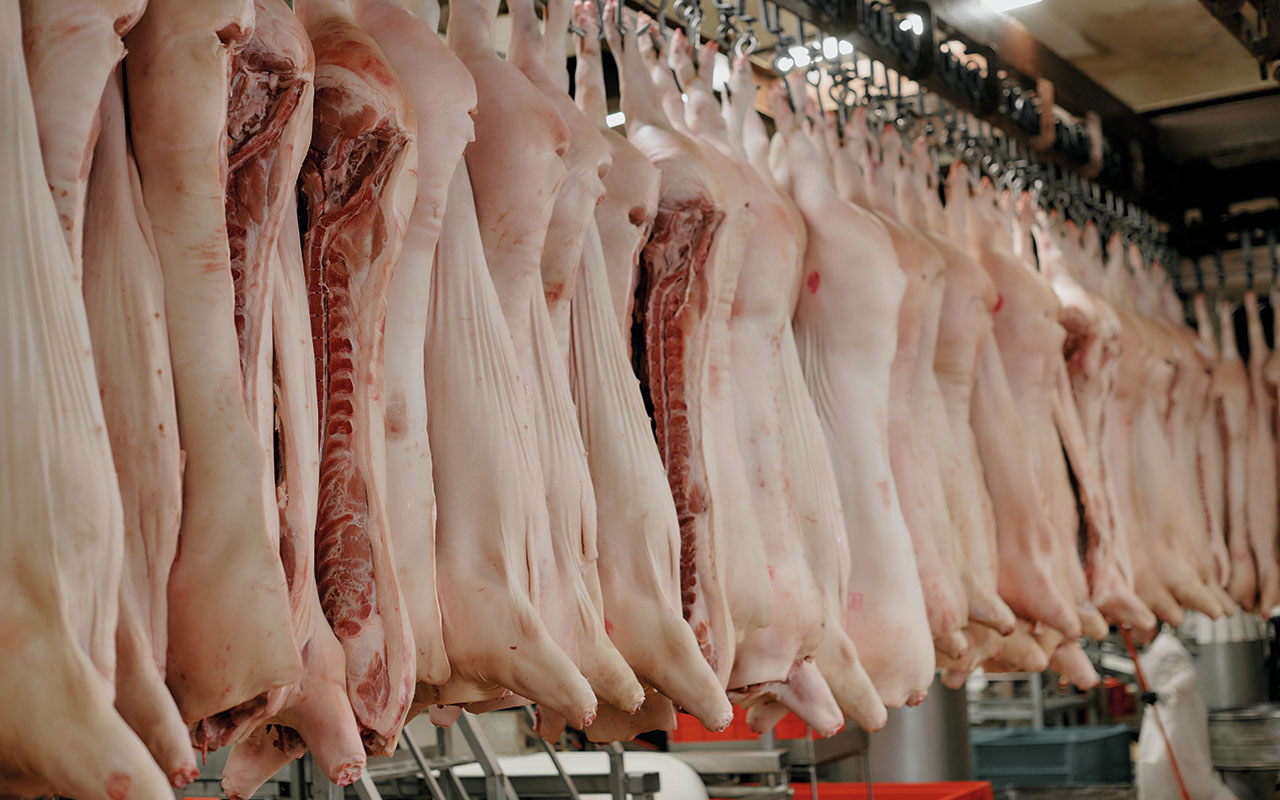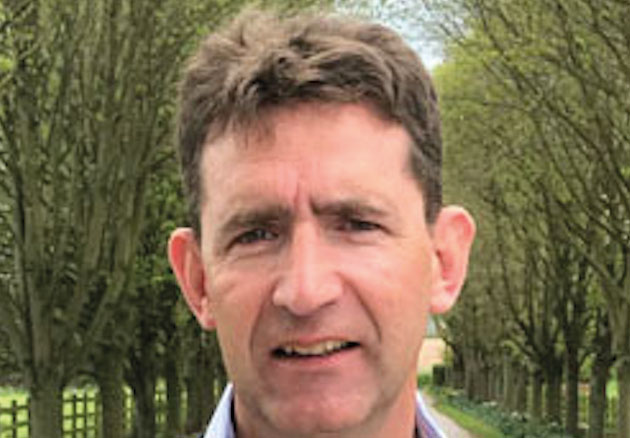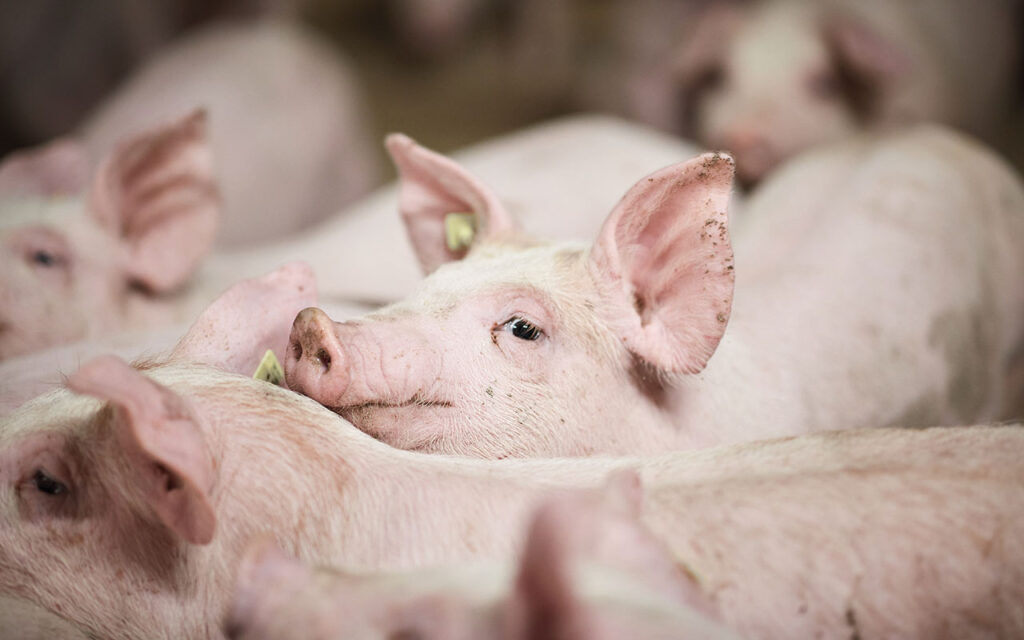It is not just about being big. It’s about being effective with it. These were the wise words to Phil Woodall many years ago from his friend and predecessor at Thames Valley Cambac (TVC), the late and hugely respected Andrew Stockings.
That is still very much the mantra that drives the United Pig Cooperative (UPC), which was formed earlier this year from a merger between pig marketing groups TVC, Scottish Pig Producers and Scotlean.
The coming together gives the new organisation a substantial share of the ‘available’ pigs – those not owned by the big integrated pig businesses.
UPC deals with virtually every pig processor ‘killing more than a few hundred pigs’ in the country, as well as a high proportion of independent pig producers, including many of the bigger ones.
The formation of UPC followed calls during and after the pig crisis of 2021 and 2022 for closer co-operation between independent producers to provide increased efficiency and greater effectiveness that comes with scale in the marketplace.
But Mr Woodall stressed that the marketing of pigs – primarily finished pigs, but also weaners – with all the logistics that entails, is only one part of the job.
UPC is also increasingly focused on helping producers and processors, and, by association, retailers, deliver on their requirements around efficiency, pig health and welfare, sustainability and traceability.
The merger
TVC had grown through acquisitions and organically since it began marketing pigs in 1975 in the Thames Valley basin, in Oxfordshire, expanding over the south and south-west of England, in particular.
SPP started as Grampian Pig Producers in 1979 and provided cooperative pig marketing services for members across Scotland and Northern Ireland.
Scotlean Pigs, established in 1980, marketed pigs in Scotland and primarily northern England.
SPP and Scotlean had formed a partnership with Pilgrim’s to run Scotland’s Brechin abattoir, until it was taken over by the Browns Food Group in 2022. But it was increasingly evident in recent years that they were hampered by there being only one major abattoir in Scotland.
Meanwhile, the independent pig sector, UK-wide, was under increasing pressure from multiple crises that afflicted it, prompting an industry restructure that has seen the integrated companies grow in influence.
With this in mind, Mr Woodall, TVC’s general manager, and Charlie Allen, its chair at the time, met with SPP chair Roderic Bruce and managing director Andy McGowan and their counterparts at Scotlean, Richard Butterworth and Ian Paragreen.
“We discussed whether there was scope to get together and take some costs out. We could all see, after the disaster of 2021-22, that there were fewer independents and we needed more cooperation,” he said.
Talks continued as it became obvious that there were mutual benefits to be had and the deal was announced in January 2025, with the stated aim of ‘enhancing market effectiveness, operational efficiency and member support, ensuring a sustainable future for independent producers across the UK’.
The deal was completed in March and, so far, things have gone relatively smoothly, according to Mr Woodall.
He said this had been helped by the fact that the people at the helm of the three organisations, Ian Paragreen at Scotlean, Mr McGowan and himself, shared a mutual desire to make it work, with none of them seeking to be in overall charge.
Mr Woodall said he and Mr Paragreen are ‘not that far from retiring’, while Mr McGowan is focusing on the sustainability and technical side of the new business. As a result, UPC has been recruiting for a new managing director and has already concluded the first round of interviews.
“The timing of the merger was good and there were no egos involved in this – no one is fighting for overall control,” Mr Woodall said.
There has been an issue with formally changing the name at Companies House after the company received some incorrect instruction, but this should be resolved soon. “Overall, given how difficult mergers like this can be, it has gone as well as it could have done,” he said.

Adding value
The Scotlean and SPP producers are benefiting from the added scale already, partly because it reduces the company’s costs, compared with when they were operating separately. This lowers the handling charge to those producers, who further benefit through increased access to the market, Mr Woodall added.
“That particularly helps those guys in Scotland, who always had to be careful in the past because they had all their eggs in one basket,” he said.
The marketing side is about channelling the right stock to the right outlet, ensuring members get good value for their stock and ironing out the numerous logistical issues involved for them.
But it is only one aspect of what UPC offers. Its website highlights a range of services, including data analysis, health feedback, a review of breeding stock from genetics companies and advice across various areas.
There is more it can do in this area, according to Mr Woodall. “We have always given enough added value to producers through contract negotiations and all the rest, but we needed to add more value for the processor. The way we could do that was to look at what their customers, the retailers, are pressurising them to do,” he said.
“They’re starting to talk about the environment, sustainable soya, carbon footprint, free-farrowing and various other elements. We want to use our scale to deliver on those aims, which makes our supply even more valuable.”
Value of data
Key to UPC delivering benefits in these areas is using its scale for the collection of useful data.
“We take slaughter data and input it into our system, which analyses it before it goes back to producers. Our new Scottish producers have really noticed the benefits, as they can see, for example, how much they are losing because of grading or not being in the right weight range.
“That information is so underused. Producers sometimes say to me they need more money for their pigs, but I can show them there is 6p or 7p they could earn for themselves just by making sure their selection for the slaughter process is better. My advice is to always use the data – the data is your friend.
“But we can also send data up the chain to add value for the processor – for example, on carbon footprinting or soya supply.
“The scale of our operation means, at some point, we can employ a company to examine all our farms and collect that data, so that’s it’s a one-stop shop.
“The processors would have to employ people to ensure compliance, but we can provide pigs with all those bells and whistles, and save them that cost,” he said.
UPC is also seeking to gather data on pigs from abattoirs to help improve pig health and efficiency along the chain, something that has been largely missing since the demise of the British Pig Health Scheme.
“Often lines are slowed down because too many pigs are on the detained line. On some days, we can be responsible for 80% of the kill in a particular plant, and if we can put a vet in there to collect that key health information and send it back to producers, we can help improve the pigs’ health.
“That means fewer pigs going up the detained line, which, in turn, represents a real bottom line improvement to the processors. At the moment we are liaising with vet practices to do some of this work.”
Improved contracts
TVC has been involved in the shift towards longer-term, more stable, retail-led contracts, often with a strong cost-of-production element, since the pig crisis.
Mr Woodall welcomed the development, which he said was driven as much by retailers seeing empty shelves as the ‘calamity’ that hit pig producers in 2021 and 2022.
He also welcomed new regulations governing pig contacts, due to come into force in August, aiming to bring about greater fairness in the supply chain.
He said the main benefit of the new regulations is the requirement for a notice period that must be adhered to by both parties.
“It will drive better behaviour and bring more clarity. But there must, of course, also be flexibility on both sides,” he said. “This must be balanced – you can’t expect processors to accept a variation in supply from producers but then be held to contracted numbers when it suits the producer.”
One area that he urged producers to focus on, however, was better forecasting of nearby pig supplies.
“I don’t want to get to a situation where producers are rewarded financially, or otherwise, for the ability to match what they forecast, as has been the case in years gone by,” he said. “Producers need to voluntarily give an accurate forecast of what is coming through for the periods ahead, whether that’s four, eight or 13 weeks.
“Processors can’t absorb that variability – for example, in hot weather. But if they know they are going to be getting more or fewer pigs over the coming weeks, they can plan for it – for example, by killing pigs a bit earlier or later, depending on the forecast.”
Pig production outlook
Mr Woodall is upbeat about the outlook for the UK pig sector. “If I go back over the past 40 years, more land has been purchased out of profitable pig production than any other form of livestock production.
“But the pig industry has been good for those who have been prepared to adapt and be efficient and work at it. Gone are the days when you could be bang average and still do very well. You’ve got to be good at what you do,” he said.
He said there were three main risks for aspiring young pig producers – the volatility of the meat market, exposure to global feed commodity prices and on-farm production variability.
“The first two are the most significant of those. So, there is a good future for aspiring young producers if they are good producers and decide to lock into long-term contracts to take away two of the three big risks.”
He said one of the biggest differences for pig producers today is that the ‘plus’ element in cost-of-production-plus contracts is now realistic.
“I think the future is bright for pig production. If you are good at what you do, you will get a decent margin,” he added.
UPC future
As for UPC, he would like to see it continue to grow, but there is much more to it than that. “We haven’t got targets for growth, but the more members we have, the more efficient we become and the more we can add value to our customers. But, fundamentally, we just have to be as effective as possible for the members we represent,” Mr Woodall said.
He wants to move further away from situations, common in the past, where processors and producers are battling against each other, and he insisted processors had no need to be wary of UPC’s growing scale.
“It should be all about cooperation and shared goals around welfare, carbon, sustainability and so on, so that when processors really drill down and look at what marketing organisations cost them, in the grand of scheme of things, it is minuscule against the benefits we deliver.”
While Mr Woodall is contemplating retirement at some point, his work is not finished at UPC. “I have had 47 years battling for independent pig producers and, before I go, I want to at least try to establish an environment where independents can continue and thrive.
“When you look at the scale of the processors these days, independent producers need to find a way to be listened to. Collectively, they have a voice through UPC.”
Rob Beckett

Phil Woodall said the loss of UPC’s chair, Rob Beckett, (see p39) left a huge hole, both on a personal and professional level. Rob, joint managing director of Yorkwold, became chair of TVC in 2023 and carried on the role with UPC.
“Rob made a significant contribution to where we are today,” Mr Woodall said. “He never looked at it from Yorkwold’s point of view, but in terms of what we can do for all members. He was always a great sounding board to discuss things and one of the nicest people you could ever meet. He is a huge loss to us all.”




